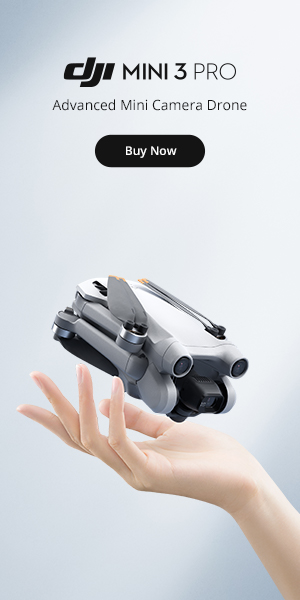by Mark Laymon
Share
by Mark Laymon
Share Our Course
Pilot Institute
Part 107 Made Easy
This industry-leading course will help you pass the FAA Part 107 drone license test – so you can fly drones commercially in the United States.

Drone Videography is a Fun and Exciting Hobby
Drone videography is a fun and exciting hobby that can allow you to capture unique perspectives and create stunning video footage. If you’re just getting started with drone videography, it can be overwhelming to know where to begin. In this blog post, we’ll provide a beginner’s guide to drone videography, including tips on equipment, shooting techniques, and post-processing. Let’s start our Guide to Drone Videography!
Choose the right equipment: The first step in getting started with drone videography is choosing the right equipment. There are many different drones available on the market, ranging from budget-friendly options to high-end professional models. Consider factors such as the quality of the camera, the stability of the gimbal, the range and speed of the drone, and any other features that are important to you. It’s also a good idea to read reviews and do some research to find the best drone for your needs and budget. We like DJI Drones.
Practice flying and controlling your drone: Before you start capturing footage, it’s important to practice flying and controlling your drone. This will help you get a feel for the controls and become comfortable with operating the drone. It’s also a good idea to familiarize yourself with the safety guidelines and regulations for flying drones in your area.
Use a tripod or other stabilizing device: A tripod or other stabilizing device can help to eliminate camera shake and produce smooth, professional-quality footage. There are a variety of options available, such as handheld gimbals or stabilizing mounts that attach to your drone.
Use manual controls: Many drones have automatic modes that can help you capture footage easily, but using manual controls can give you more control over the final result. Experiment with different settings, such as adjusting the shutter speed, aperture, and ISO, to get the look you want.
Plan your shots in advance: Before you start flying your drone, it’s a good idea to plan out the shots you want to capture. This can help you visualize the final result and ensure that you get the footage you need. Consider factors such as the composition, lighting, and movement in each shot.
Do you have your Part 107 Certificate? If not, go to Pilot Institutes Part 107 Made Easy course!
“Unlock the Secrets of Drone Videography: Join our Free Course Today!”
Are you ready to take your drone videography skills to new heights? Look no further than Drone Videography 101! We’re excited to offer our comprehensive course to you for free as we continue to build our expertise in this exciting field. As you work your way through the course, you’ll have the opportunity to learn about and explore the products and services that we personally use and recommend. Not only will you gain valuable knowledge and insights, but you’ll also have the chance to take advantage of exclusive discounts and deals through our affiliate partnerships. And don’t worry – you’re under no obligation to make any purchases in order to enjoy and benefit from the course. Whether you’re a seasoned pro or just getting started with drone videography, this is a unique opportunity you won’t want to miss. So why wait? Sign up for our Drone Videography 101 Course today!
STAY IN THE LOOP
Subscribe to our free newsletter.
Drone Videography 101 Categories
Introduction to Drone Videography
Drone Regulations and Laws
Choosing the Right Drone for Videography
Camera Settings and Techniques
Aerial Composition and Shot Planning
Post-Production and Editing
Safety and Maintenance
Advanced Techniques and Industry Trends
Business and Marketing for Drone Videographers
Case Studies and Examples of Professional Drone Videography Projects








